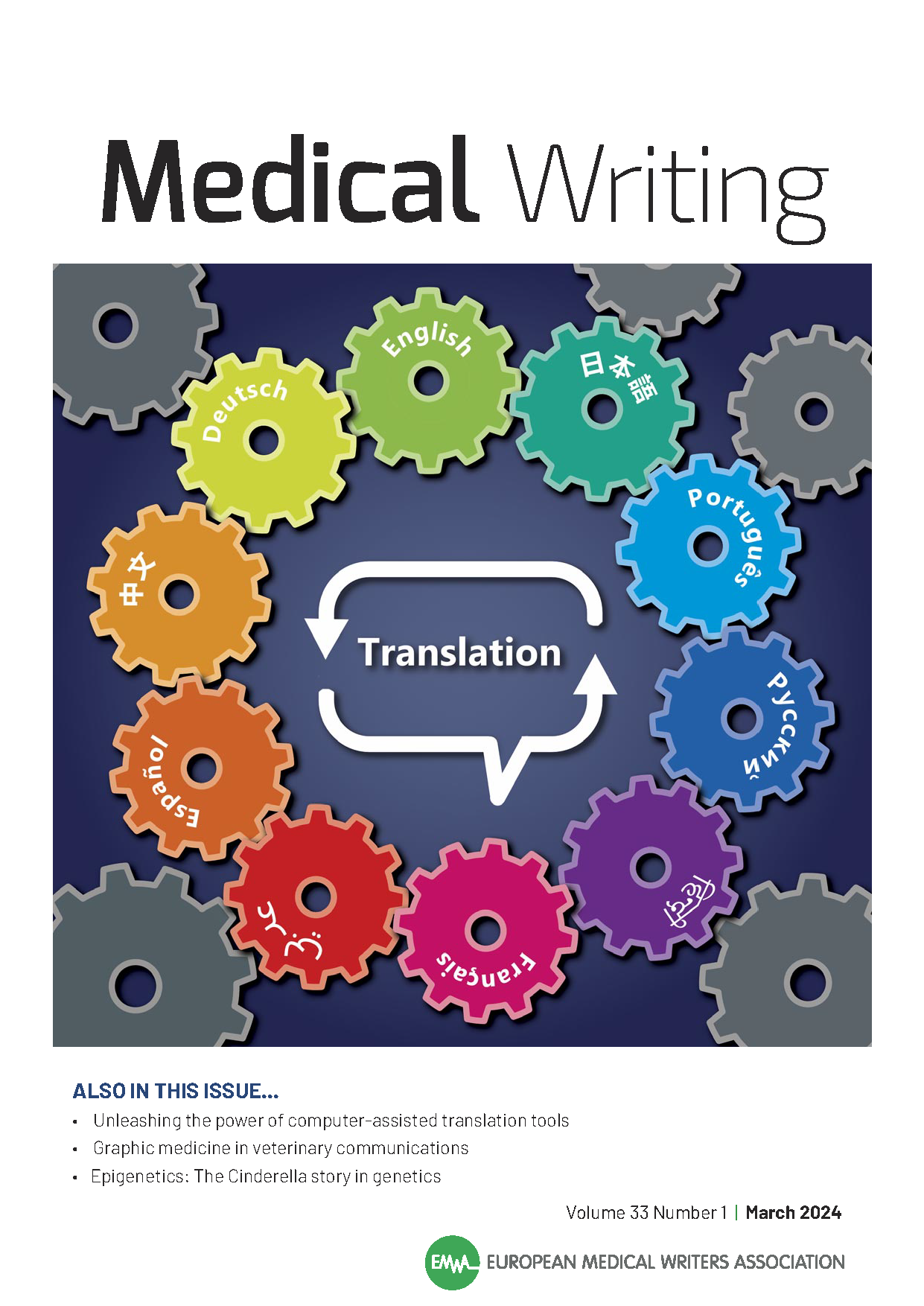
Volume 33, Issue 1 - Translation
Digital Communication
Authors: Nicole Bezuidenhout, Natasha Grande de França
Abstract
Section Editor: Nicole Bezuidenhout
Purr-fecting translation: Unleashing the power of computer-assisted translation (CAT) tools
Author: Natasha Grande de França
Medical translations are fundamental, and precision is at the core of this work. Any minimal inaccuracy can impact patients’ lives and the success of a treatment.
Translating is more than the “simple” conversion of words from one language to another. It involves understanding the function of language variations, culture, and values.1 In the case of medical translation, it is also imperative to know medical terms, jargon, and expressions, as well as applicable laws and regulations. Beyond the translation task itself, the 2023–2028 European Master’s in Translation (EMT) framework stipulates “the knowledge and skills to implement translation technology” as one of the five main areas of competence of a professional translator, which involves making effective use of computer-assisted translation (CAT) tools.
Medical Writing. 2024;33(1):78–82. http://doi.org/10.56012/ifyr9495
 Download the full article
Download the full article
Search
Articles
Links
Editoral Board
Editor-in-Chief
Co-Editors
Managing Editor
Victoria White
Deputy Managing Editor
Alicia Brooks Waltman
Associate Editors
Section Editors
AI/Automation
Biotechnology
Digital Communication
EMWA News
Freelancing
Gained in Translation
Getting Your Foot in the Door
Good Writing Practice
Pablo Izquierdo / Alison McIntosh
In the Bookstores
Publications
Medical Communications/Writing for Patients
Medical Devices
My First Medical Writing
News from the EMA
Pharmacovigilance
Regulatory Matters
Regulatory Public Disclosure
Louisa Ludwig-Begall / Sarah Kabani
The Crofter: Sustainable Communications
Veterinary Writing
Editors Emeritus
Layout Designer
Chris Monk
 Visit the EMWA website
Visit the EMWA website